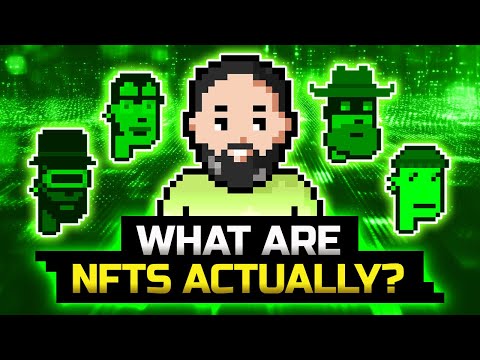
title
The Rise of NFTs: Understanding Uniqueness, Ownership, and Provenance
In the ever-evolving landscape of digital assets, a new player has emerged that is reshaping the way we think about ownership and value: Non-Fungible Tokens, or NFTs. These digital assets have taken the world by storm, capturing the attention of artists, collectors, and investors alike. But what exactly makes NFTs so revolutionary? The answer lies in their ability to offer something digital assets have never provided before: uniqueness, ownership, and provenance.
What Are NFTs?
Before diving into the unique aspects of NFTs, it’s important to understand what they are. NFTs are a type of digital asset that represents ownership of a unique item or piece of content, such as art, music, videos, or even tweets. Unlike cryptocurrencies such as Bitcoin or Ethereum, which are fungible and can be exchanged for one another, NFTs are one-of-a-kind and cannot be exchanged on a one-to-one basis.
Uniqueness: A Digital Signature
One of the defining characteristics of NFTs is their uniqueness. Each NFT is essentially a digital signature—an identifier that marks it as one of a kind. This means that when you own an NFT, you own something that is truly unique, much like a rare artifact or a limited-edition print. This uniqueness is encoded into the NFT’s metadata, ensuring that no two NFTs are ever the same.
Ownership: A New Era of Digital Possession
The concept of ownership is another revolutionary aspect of NFTs. In the digital world, ownership can often be ambiguous. However, NFTs provide a clear and verifiable way to prove that you own a digital asset. When you purchase an NFT, you are not just buying a copy of a digital file; you are buying the original item itself. This ownership is secured through blockchain technology, which acts as a public ledger to verify and record transactions.
The Role of Digital Wallets
To store and manage NFTs, owners use digital wallets. These wallets are akin to a digital vault where you can keep your NFTs safe and secure. The use of digital wallets ensures that you have full control over your digital assets, allowing you to sell, trade, or showcase your NFTs as you see fit.
Provenance: Tracing the History of Ownership
Another key feature of NFTs is their provenance, or the history of ownership. Each NFT comes with a built-in record that shows all previous owners, adding a layer of authenticity and value. This provenance is crucial for collectors and investors, as it provides a transparent and traceable history of the asset’s journey from creator to current owner.
Enhancing Authenticity and Value
Provenance adds a significant amount of value to NFTs by guaranteeing their authenticity. Much like a certificate of authenticity for a physical artwork, the provenance of an NFT assures buyers that the digital asset is genuine and has not been tampered with. This transparency is a major factor in the growing popularity of NFTs among collectors and creators.
The Impact of NFTs on the Art World
The art world has been one of the most impacted sectors by the rise of NFTs. Artists now have the ability to tokenize their work, creating digital pieces that can be bought and sold in a way that was never before possible. This has opened up new revenue streams for artists and has democratized access to art ownership.
Empowering Artists and Creators
By using NFTs, artists can retain control over their work and benefit financially from subsequent sales. Smart contracts, which are part of the blockchain technology underpinning NFTs, can be programmed to ensure that artists receive a percentage of sales whenever their NFT changes hands. This empowers creators by providing them with a sustainable income model.
The Future of NFTs
As NFTs continue to gain traction, their applications are expanding beyond art and collectibles. From virtual real estate to gaming assets, the potential uses for NFTs are vast and varied. This technology is poised to revolutionize numerous industries by providing a secure and transparent way to own and trade digital assets.
Challenges and Considerations
Despite their potential, NFTs are not without challenges. Issues such as environmental impact, market volatility, and copyright concerns are ongoing discussions within the NFT community. As the technology matures, it will be crucial to address these challenges to ensure the sustainable growth of the NFT ecosystem.
In conclusion, NFTs represent a paradigm shift in the way we perceive and manage digital assets. By offering uniqueness, ownership, and provenance, NFTs have created new opportunities for artists, collectors, and investors. As this technology continues to evolve, it will undoubtedly shape the future of digital ownership and asset management.
Ready to join the Musk Empire? Believe in the project? ? Join now




 Bengali
Bengali Chinese (Simplified)
Chinese (Simplified) English
English Hindi
Hindi Indonesian
Indonesian Irish
Irish Spanish
Spanish Swedish
Swedish Turkish
Turkish